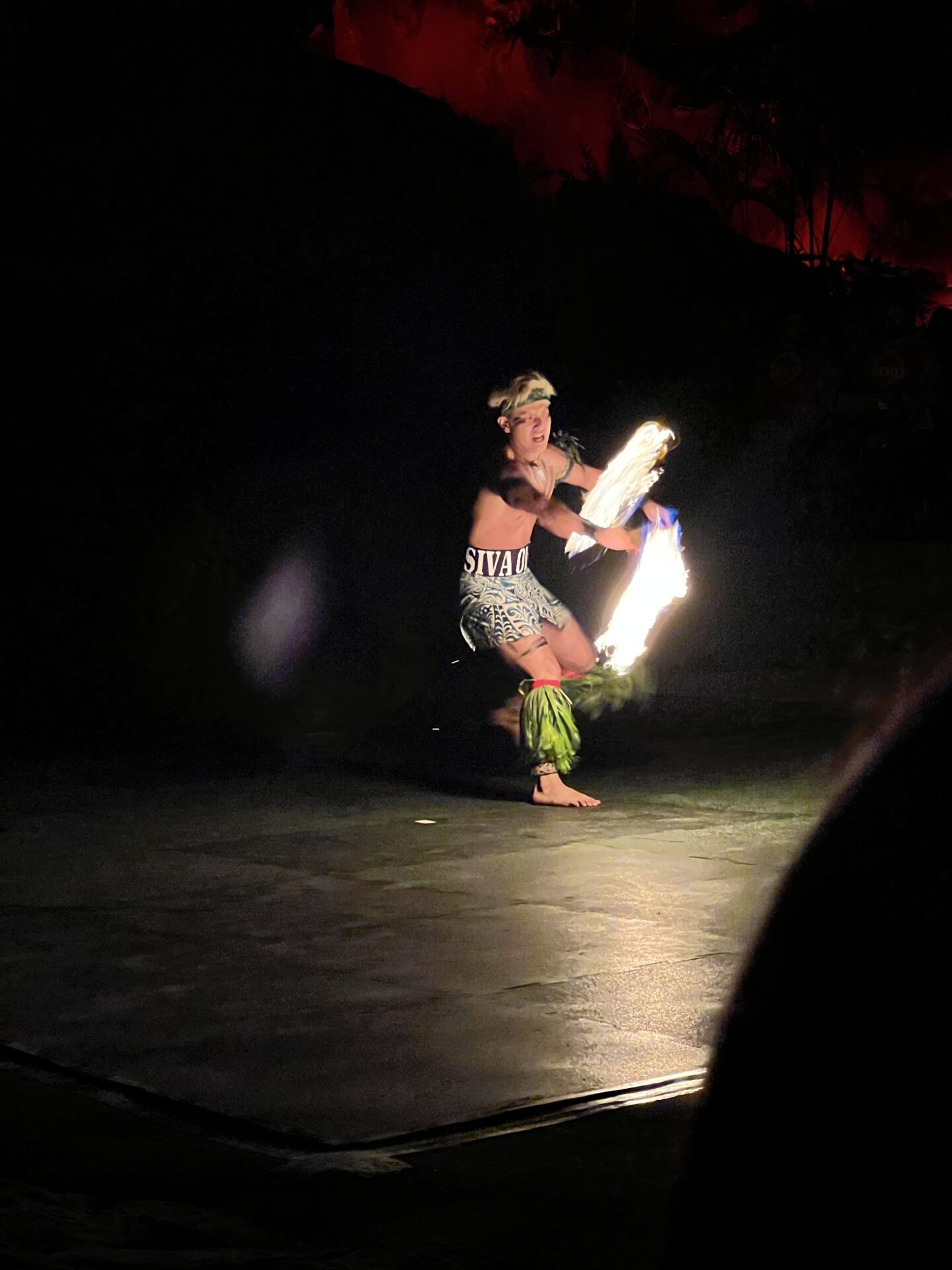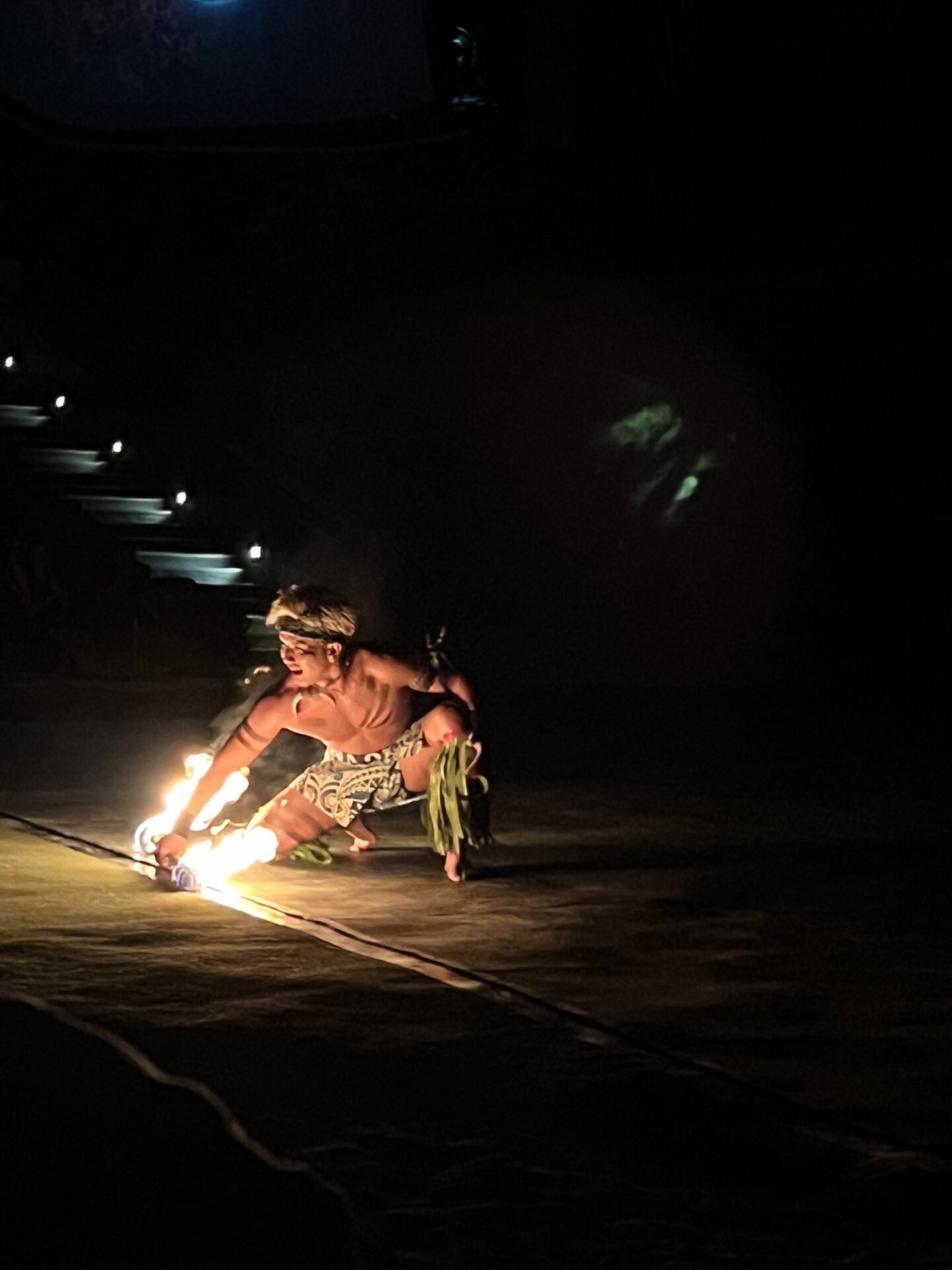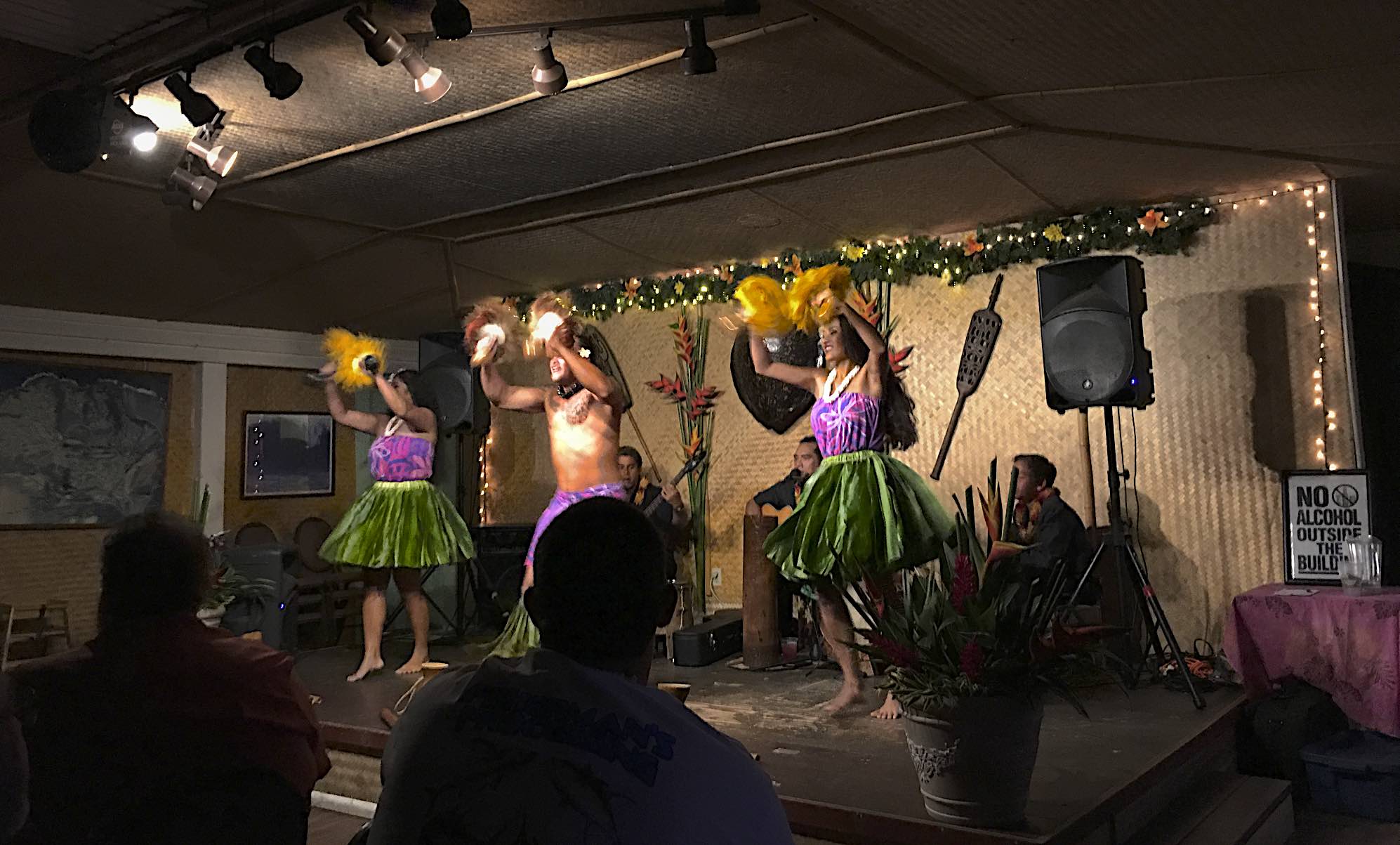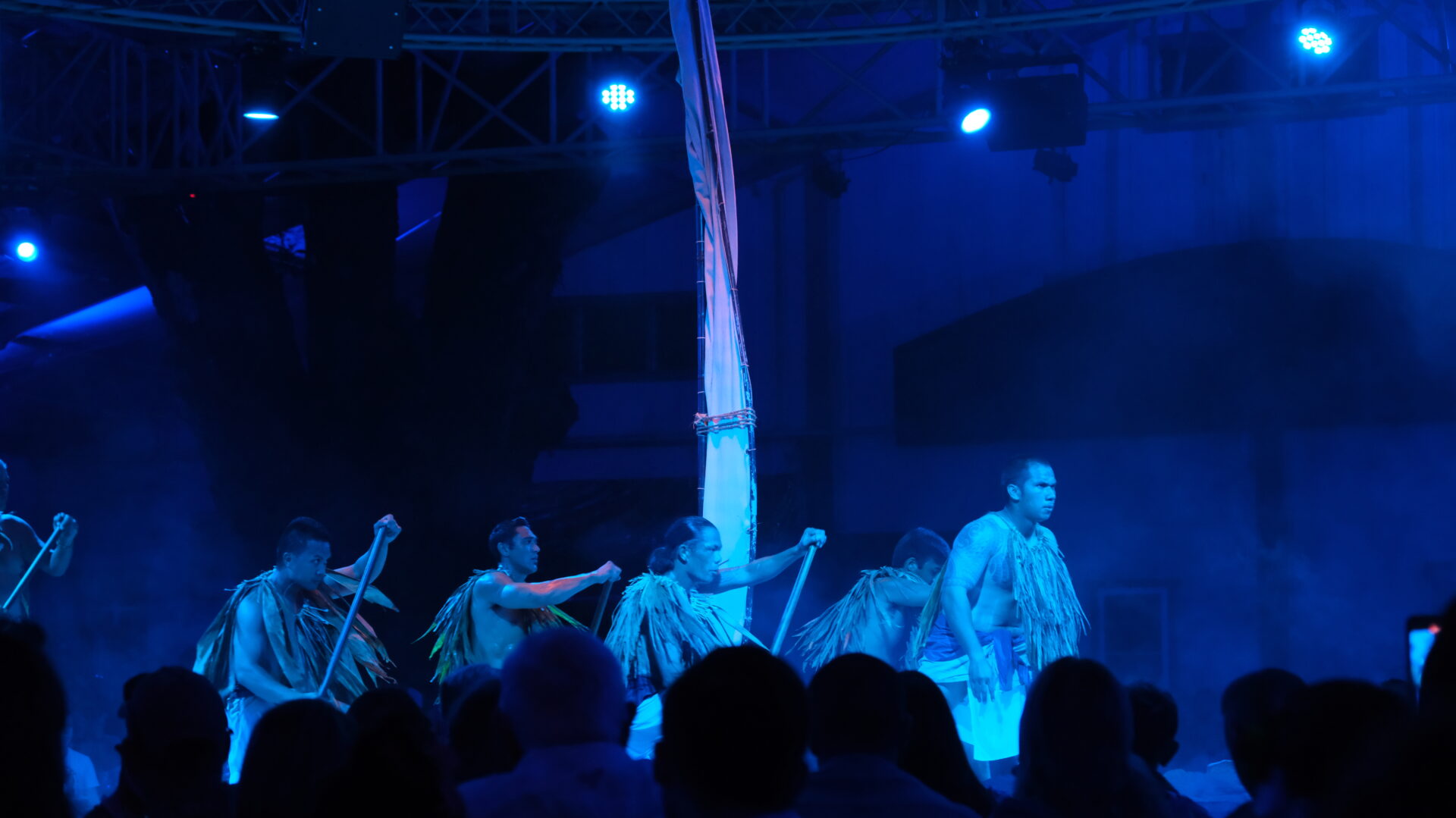Before the fire. Before the drums. Before the crowds and the stage lights—there was the nifo oti, the Samoan war knife.
Fire Knife Dancing is a show-stopping finale to many luaus. But long before, it was something else entirely: a weapon. The nifo oti, which translates to “tooth of death,” was originally a serrated blade attached to a wooden handle, designed for battle. Warriors carried it into combat, using both the blade and the club end to strike with precision and power. It was heavy, serious, and deadly.
But over time, the islands shifted, and so did the traditions. 
Fire Knife Dancing: From Weapon to Dance
In Samoa, dance has always been a way of honoring the past—telling stories through movement, rhythm, and expression. So, as the nifo oti began to lose its role as a weapon, it found a new one as a symbol of cultural pride.
Sometime in the early 20th century, Samoan performers began incorporating a stylized version of the war knife into ailao, a ceremonial dance traditionally performed by warriors to demonstrate their strength and agility. Dancers would spin, toss, and catch the knives in displays of control and finesse, often performed at ceremonies and village gatherings.
The Spark That Changed Everything
Enter Freddie Letuli, the man often credited with creating Fire Knife Dancing as we know it today.
In the 1940s, Freddie—a Samoan performer and student at a school in California—was watching a batons-and-fire performance at a talent show when inspiration struck. He thought: what if I lit my knife on fire?
Back in his workshop, he modified his knife to include towel wicks soaked in fuel at each end. Then he practiced—over and over—until he was confident enough to perform. The result? Pure magic.
Flames trailing through the air. The sound of spinning steel. Heat and rhythm and danger, all in one fluid motion. Audiences were mesmerized.
The Dance Evolves
From there, fire knife dancing exploded in popularity. Freddie brought his act to stages across Hawaii and the mainland U.S., and other Samoan performers began adopting—and evolving—the art form.
Today’s fire knife dancers carry forward the legacy of Freddie and the warriors before him, but with even more daring moves. Spins. Tosses. Catches behind the back. Knives twirled while lying on the ground or balanced atop poles. All while engulfed in flame.

More Than Just a Show
It’s easy to think of fire knife dancing as pure spectacle. It’s thrilling. It’s dangerous. And yes—it makes for a jaw-dropping finale at a luau. But at its core, it’s so much more than entertainment.
Fire knife dancing is a celebration of Samoan heritage. It honors the warriors of the past, the spirit of innovation, and the unbreakable pride of a people who continue to pass down their stories through dance and flame. Today, competitions like the World Fireknife Championships in Hawai‘i bring together the best of the best—many of them teenagers who’ve been training since childhood—proving that the art form is alive, evolving, and deeply rooted in culture.
So next time you see someone spin a flaming knife under a starry sky, remember: this isn’t just a performance. It’s history. It’s heritage. And it’s fire, in every sense of the word.
Lu‘au

Tahiti Nui Lu‘au
Tahiti Nui Lu‘au offers a cozy setting, making you feel like part of a talented family. Instead of hundreds, the dining hall next to Tahiti Nui bar accommodates around 60 guests, creating a tight-knit atmosphere. Enjoy well-crafted mai tais and a show featuring traditional hula and Samoan fire dance.

Lu‘au Kalamaku
Lu‘au Kalamaku at Kilohana is one of the largest lu‘aus in Hawaii and offers a captivating theatrical production of the Polynesian migration to Hawai‘i. Guests can explore the grounds, visit vendor booths, and enjoy a drink while waiting. Seating is assigned with good views from nearly every table. The show features energetic performances, including an exciting fire knife dance.

0 Comments